Create handmade red-eyed tree frogs for some math fun. While frog counters would work just as well, we offer this alternative for those who may not have counters on hand. Remember that children have fantastic imaginations; it doesn’t take much to turn an everyday item into a theme-related prop!
What You’ll Need:
- green poms OR create your own by dying white poms (you’ll need vinegar, green food coloring, napkins, plastic zippered bags, disposable gloves-optional)
- red puffy/fabric paint
- green construction paper OR craft foam
- scissors
- marker
Step 1: Dye the poms
If you already have green poms, skip to Step 3.)
Please note: If you need to dye white poms, you may want to wear disposable gloves to prevent dying your hands. We suggest using quite a bit of food coloring and letting the poms sit in the dyed vinegar for at least an hour in order to create a more prominent green color. The poms in this sample sat for about 15 minutes and came out much lighter than expected. You can use rubbing alcohol as well (adult only).
Purchase white poms from the store (white may be easier to find than green.) Place one plastic zippered bag inside another, and fill the inside bag with about ½ cup vinegar. Add several drops of green food coloring to the vinegar and gently swish the bag back and forth to mix. Add the white poms to the bag, and seal both bags. (I added fourteen poms to the bag since we are focusing on the number 14 in February.) Squeeze and manipulate the bags so the white poms soak up the green vinegar. Let sit for up to an hour. (The green poms will come out much lighter than shown here soaked with vinegar.)
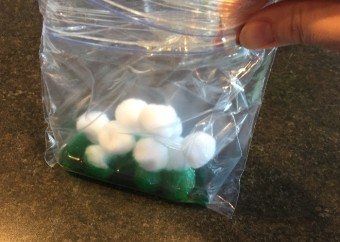
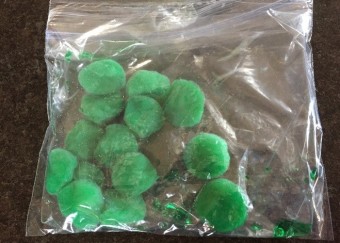
Step 2: Dry the poms
Manipulate the bag so all the poms are near the top. Use your hands to squeeze the poms so all the excess vinegar runs to the bottom of the bag. The more liquid you can squeeze from the poms, the faster your drying time will be. Open the bags and remove the poms. Immediately place the poms on folded napkins, and press the napkins over the poms to release additional vinegar. Let dry.
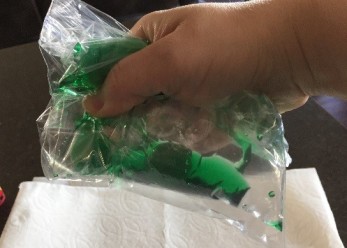
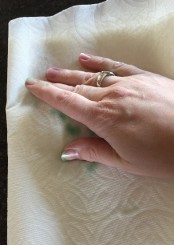
Step 3: Add eyes
Squeeze two dots of red puffy/fabric paint onto each green pom to create red eyes. Let dry thoroughly. When you are done, you should have a group of cute little red-eyed tree frogs.
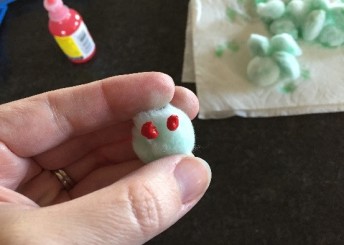
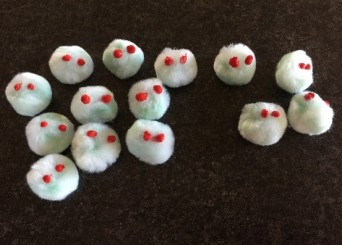
Step 4: Create a leaf
Cut a simple leaf shape from green construction paper or craft foam. Rainforest leaves come in all shapes and sizes, so don’t fret too much about cutting a perfect leaf shape! Make sure the leaf is big enough to hold all the frogs.
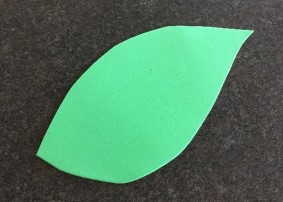
Step 5: Begin the math activities
Depending on the skill levels of the children in your setting, you can use the red-eyed tree frogs for an assortment of math activities:
- Instruct each child to place a certain amount of frogs on the leaf. Ask, “How many frogs are on the leaf?”
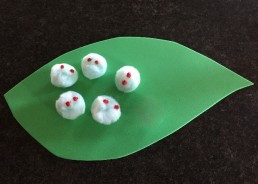
- Place one to six frogs on the leaf, and ask children to quickly estimate how many frogs are on the leaf without counting all of them. Observe as children do this so you can see who estimates with a glance and who counts. (Most adults can easily see up to six or seven objects without counting them. This can be a tricky skill for young children! Start out with a small number.)
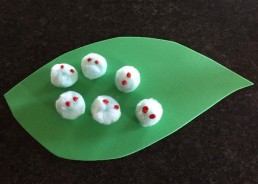
- Place a number of frogs on the leaf and ask children to count them. Invite a child to add two more frogs, and ask how many frogs are now on the leaf. Continue adding and subtracting frogs for as long as interest lasts.
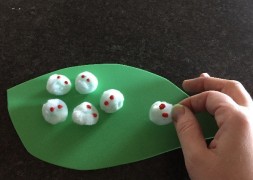
- Use a marker to divide the leaf into four sections. Place four frogs on the table and ask children how they can place the frogs so each frog sits in its own section. Try doing this with eight frogs. To challenge older children, offer an odd number of frogs and ask how the frogs would be divided.
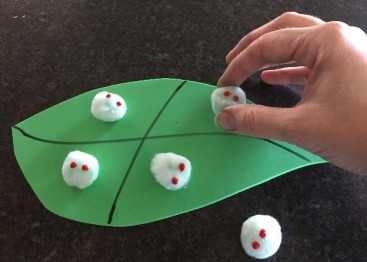
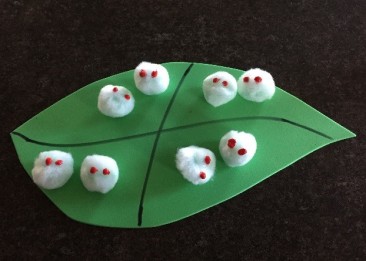
Back to blog listing